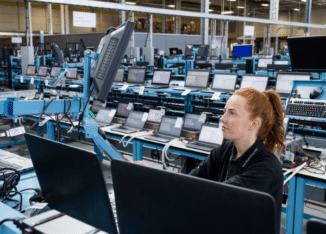Hybrid by Design
Some organisations were built in the public cloud, while others made strategic moves to embrace it. Traditional hardware can drain budgets and become increasingly difficult to manage. And many workloads aren’t well-suited for the hyper-scaler environment.
So, where should you place your critical applications and IT infrastructure to drive the best outcomes for your organisation? How can you modernise your IT operations effectively? Now might be the perfect time to evaluate what makes the most sense, both financially and operationally and explore a more balanced solution.
With DTP’s Hybrid Cloud solutions, you can achieve the ideal mix of public, private and on-premises environments – delivering the same user experience as Public Cloud but often at up to 40% lower cost.
Our Hybrid Cloud Services
Our Hybrid Cloud solutions bring the cloud experience to all your IT, bringing together storage, compute and connectivity onto one platform. Deploy and manage resources across your private and public clouds while retaining control of your data and flexibility over how you consume and manage your services.
-
STORAGE
Seamlessly store, manage, and protect all workloads – anywhere. As data grows and becomes increasingly distributed, organisations are realising that relying solely on the public cloud is neither scalable nor cost-effective.
The rise of generative AI only adds to this challenge. Bring your data to life. Accelerate innovation, simplify operations and optimise your resources with Storage solutions from HPE and DTP.
-
COMPUTE
Data is the driving force behind business transformation. Empower your hybrid environment with next-generation compute solutions – no matter where your data resides.
Accelerate AI innovation, gain valuable sustainability insights, and enhance workload efficiency and performance. With our Compute solutions, you can make data-driven decisions in real-time, automate routine tasks, and ensure robust security at every level.
-
CONNECTIVITY
Drive innovation from the edge to the cloud with security-first, AI-powered networking. Our networking solutions offer resiliency, security and flexibility to meet new business demands.
Unify and simplify secure access across locations, users and IoT, automate and secure IT operator experiences with AIOps and AI networking, and choose your network, your way, with agile networking-as-a-service options.
FROM AI PILOT TO PRODUCTION
Accelerate your Machine Learning and AI initiatives. Build private data lakehouses, create robust data pipelines, and fine-tune your models – all while operationalising your GenAI workflows with a full-stack, turnkey private cloud for production-grade AI.
Adopt a pre-configured, AI-optimised private cloud that empowers your AI and IT teams to experiment and scale their projects. With out-of-the-box solutions co-designed by tech leaders NVIDIA and HPE, and supported by DTP, you can innovate faster and more efficiently.

-

Key Benefits of Our Hybrid Cloud Solutions
Accelerate digital transformation
Simplify your IT estate with unified management. Gain valuable insights into usage, cost, performance and environmental impact. Scale up or down on demand, adapt quickly to changing needs, and enhance reliability and resilience. Reduce the carbon footprint associated with your IT operations with a comprehensive suite of sustainability services covering technology, services, financing, and asset upcycling.
Blend legacy systems with modern solutions to optimise capacity and free up capital. With support from an ecosystem of trusted vendors, our Hybrid Cloud platform offers the safest and most reliable environment for your business.
-

Why Work With DTP Group?
Infrastructure on your terms
If you’ve found yourself Hybrid by Accident, now may be the perfect time to explore becoming Hybrid by Design.We can help you innovate faster, modernise and simplify operations, all while reducing costs. With our solutions, you can bring the cloud experience to your entire IT environment.
The HPE GreenLake edge-to-cloud platform enables seamless management of hybrid multi-cloud environments through a single, intuitive self-service console. Deploy and manage resources with full control over your data, while maintaining the flexibility to consume and manage services on your terms.
Consult, deliver, secure, support.
Our team of experts is here to guide you at every step.







